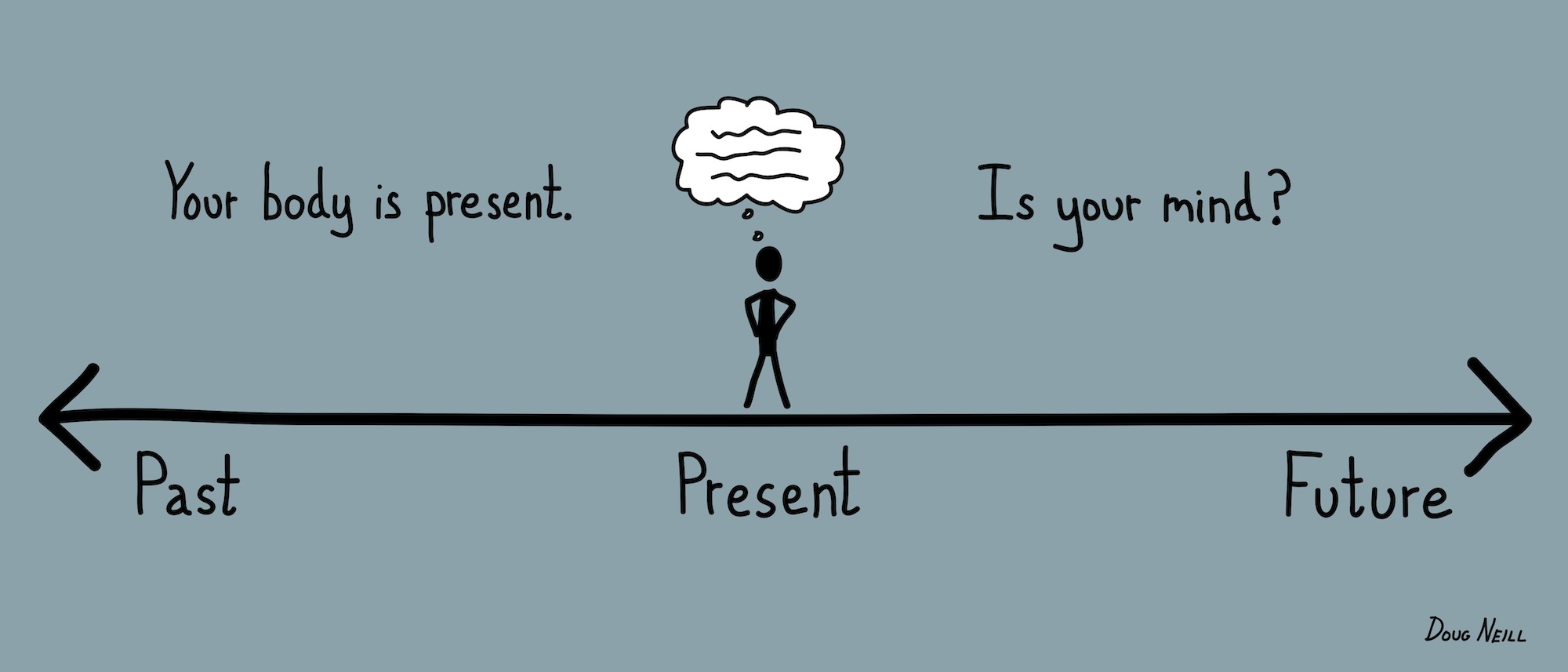Whilst this is from a religious standpoint, it’s still interesting to see the history of mindfulness. This is taken from a piece written by Luis Felipe Morales Knight of Pepperdine University, Graduate School of Education and Psychology.
Mindfulness technologies have been applied in human endeavours for thousands of years. They have been found of great value by Hindus, Buddhists, Muslims, Christians; in India, Asia, Europe and America; in the far past, in the Middle Ages and in modern times. The depth and breadth of human experience with mindfulness technologies in itself argues very powerfully for their intrinsic worth in solving problems in inner experience, which is arguably the métier of clinical psychology.
Hindu mindfulness: 1500 BCE
Hinduism was the birthplace of virtually all Asian contemplative traditions. The Sanskrit word yoga ‘discipline’ applies to a wide range of contemplative practices designed to unite the individual soul (atman) with brahman, which is variously translated ‘God’, ‘Godhead’, or ‘the ground of existence’. Smith (1994) identifies four major schools of yoga:
- jñana yoga ‘knowing discipline’: a contemplative/reflective approach toward an impersonal brahman;
- bhakti yoga ‘devotion discipline’: an approach of cultivating love and devotion toward a personal brahman, including some types of mantra meditation (the constant repetition of a word or name, with the aim of fully internalizing its meaning);
- karma yoga ‘labor discipline’: an approach involving work performed with devotion;
- raja yoga ‘royal discipline’: the psychophysical science including the moving meditations we know in the West by the word ‘yoga’.
Daoist mindfulness: 6th c. BCE
From its beginnings Daoism has concerned itself with creating a harmonious relationship between humans and the world through direct contemplation of the ‘ground of existence’—that which remains after all objects are extinguished. (See Appendix A for an exercise in this vein.) The ‘ground of existence’, the system of the world, and the method of achieving harmony are all terms by which the Chinese term Dào can be translated (Smith, 1994). Daoism’s best-known contributions to mindfulness practice are qì g¯ ng ‘energy work’ exercises and the martial art tài jí quano ‘Daoist fist’. Both are moving meditation systems; both seem to be modified Hindu raja yoga.
Buddhist mindfulness: 535 BCE
Buddhist mindfulness techniques center on seated meditation and mindfulness of the breath. One of the oldest Buddhist meditation practices is vipassan¯ ‘discernment’ meditation, which is a graded, deeply intellectual system of attempting to directly perceive the truths of the body, feelings, consciousness and ‘the objects of the mind’ (S¯l¯ nanda & Heinze, 1990). Probably themost familiar Buddhist meditation system to Americans is Japanese Zen, which uses sitting and walking meditation as a tool to achieve satori, a radical, sudden insight into the nature of reality and conscious experience (Watts, 1989).
Christian mindfulness: 530 CE
The Christian contemplative tradition flowered in the Middle Ages with the introduction in about 530 CE of communal (cœnobitic) monasteries (Alston, 1907/2003). Among the great Christian mystics are St. John of the Cross, who coined the term “dark night of the soul”; St. Teresa de Ávila, who described a seven-stage visionary journey to the throne of God (Underhill, 1930/2002); and St. Hildegard of Bingen, who wrote chants and songs out of her inner experiences (Flanagan, 1990). For several centuries after the rise of Protestantism, the mystical tradition and its insistence on a direct, immanent experience of God fell out of favor, though it was kept alive by relatively minor traditions such as Quakerism until the rise of Pentecostal Christianity in the 19th century. Mainstream Christian churches are now rediscovering the medieval mystics in an attempt to compete with Pentecostalism in feeding their parishioners’ need for immanent religion.
Muslim mindfulness: 9th c. CE
Like Christianity and Judaism, Isl¯ m developed its mindfulness tradition well after its founadation about 610 CE . It was not until the 9th century CE that the mystical tradition tasawwuf ‘Sufism’ developed out of a reaction to a growing legalism in Isl¯ m (Armstrong, 2002). The heart of Sufism is a search for a direct confrontation with the Divine, often visualized as Love or as an all-consuming fire (Fadiman & Frager, 1997). Sufism is a large family of tariq¯ t ’teaching lineages’ employing a fantastic variety of techniques, but the most familiar of these will be that practiced by the Persian Mevleviye order—the moving meditation of the ‘whirling dervishes,’ in which the practitioner whirls for hours, even days, steadily counterclockwise on the left foot, with the right arm high, palm skyward, and the left arm down, palm earthward. This distinctive practice is a visualization of the movement of the world, with God in the still center, energy coming down from heaven and into the earth through the body of the whirler (Various, 2004b).
Jewish mindfulness: 10th c. CE
Similarly, the Middle Ages generic name of zithromax saw the birth of Jewish contemplative practices, the most famous of which is qabbala ‘received [tradition]’, a practice that centers on a very close reading of Jewish scripture with reference to a system of numerological relations (Various, 2004a). The student of qabbala enters into a deep contemplation of the relationships between verses, words, letters and their numerological equivalents, creating a powerful web of associational meaning among them all that points to a mystical, immanent understanding of the Divine. Like the Christian mystical tradition, qabbala has enjoyed a renewed popularity in America in recent years.
Back to ‘Mindfulness, the backlash, the reality’.
Image credit: Doug Neill

